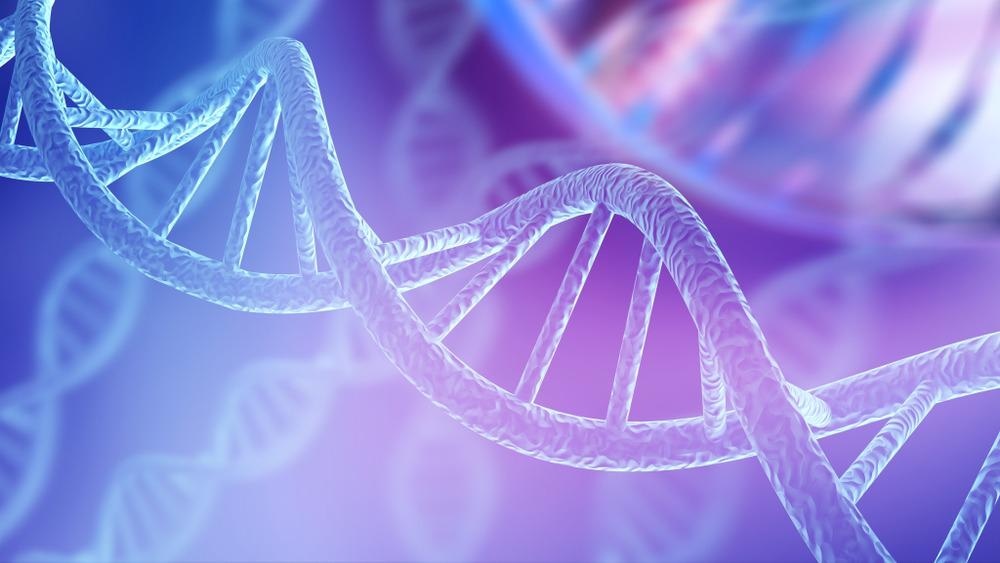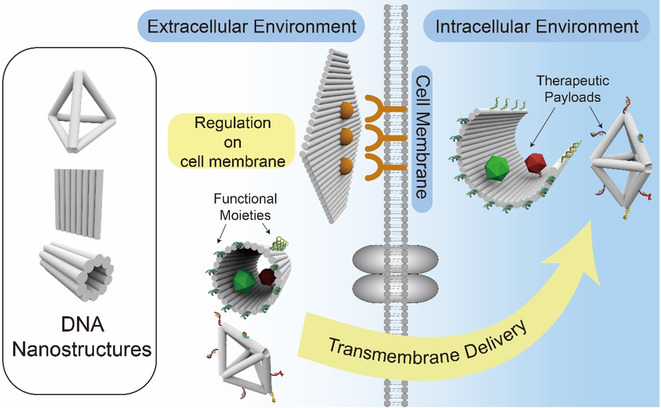Controlling specific biological functions of cells has always been an exciting goal for researchers in the field of biochemistry and biophysics with novel methods of achieving this objective being a point of priority. The progress of this research has been outlined in the journal Advanced NanoBiomed Research.

Study: Regulation of Biological Functions at the Cell Interface by DNA Nanostructures. Image Credit: Billion Photos/Shutterstock.com
With the emergence of nanotechnology and its incorporation in various fields, DNA nanostructures have been investigated for their significance within the regulation of physiological functions at biological interfaces.
Significance of Biological Functions
The comprehension and regulation of biological functions are critical for researchers who are aiming to understand cell-cell communication for medical applications, such as enhancing drug delivery to target cells whilst reducing toxicity to neighboring healthy cells.
Biological processes are integral for the health of cells and ensure they are able to carry out daily functions, and through regulating cell interfaces, there are many targets that can be useful in disrupting a cell’s journey towards disease.
This can also include tumor inhibition, reducing cell proliferation, disrupting the cell cycle, and increasing apoptosis. Additionally, regulating biological function against disorders can also involve increasing cell proliferation against degenerative diseases.
This critical application is reliant on multiple biological processes that occur at the cell interface, including ligand-receptor precise recognition or cell to cell interaction which often leads to the transport of exogenous materials. These processes are integral for the functioning of the cell, and to investigate this further, nanomaterials have been used to manipulate these processes.
Nanomaterials that have been studied for this purpose have ranged from nanoparticles and polymers to graphene; however, recent research has utilized DNA nanostructures for this aim and has become a remarkable candidate for achievement.

The regulation of biological functions on the cell membrane and in the cytoplasm by self-assembled DNA nanostructures. Image Credit: Chen, Y., Tian, R., Shang, Y., Jiang, Q. and Ding, B.
DNA Nanostructures
Self-assembled DNA nanostructures can provide a good opportunity for precise controlling and regulating of cell behaviors and their associated functions due to their beneficial characteristics. This includes specific molecular recognition and high programmability.
Over recent years, the use of DNA nanostructures has proven itself to be a useful and versatile tool that enables them to hold significant potential for use in biological function regulation.
They have been investigated and experimented with to strategize design structures for increased functionality. These have resulted in various types of DNA nanostructures such as tile-based structures, DNA origami, and others.
Cell surface targeted DNA nanostructures that utilize DNA aptamers can enhance the precise targeting, which further enables the mediation of cell signaling processes.
Research on the use of several aptamer-containing DNA strands has allowed for the recognition and tracking of protein receptor dimerization on the cell surface.
Effective properties such as higher stability and structural rigidity further enable DNA nanostructures with aptamers to be developed for target cell recognition and mediate operational processes involving the cell membrane efficiently.
This is significant for applications within cancer research, with researchers integrating aptamers for cancer biomarker recognition – an application that could revolutionize the field of cancer nanomedicine.
This research can be furthered through the use of DNA nanostructures. The regulation of biological functions will enable the targeting of cancer cells and ensure nanocarriers loaded with anticancer drugs can be precisely guided to these cells with full drug delivery.
The enablement of cell membrane transport of these drugs can be mediated through DNA nanostructures, and the reduction of toxicity to healthy cells can also be regulated in this manner.
Specific cancer cell identification and isolation would be a useful real-world application for this nanotechnology incorporated method, with nanosensors being sensitive to cancer cells and ensuring the quality of treatment to cancer patients is efficient and effective.
Future Outlook with Potential Applications
DNA nanostructures can be utilized for many different applications, such as antigen presentation and optimized antigen arrangement for B cell activation, which may guide the design of molecular vaccines. Additionally, this innovative research can also enable selective occlusion for tumor blood vessels, depriving nutrients and oxygen to cancerous tissue and decreasing drug resistance.
Biological functions are critical for the quality of cell health. The regulation of these roles through the use of DNA nanostructures can pave the way for personalized medicine to re-guide interactions away from genetic mutations and diseases.
This can be revolutionary for novel therapeutics with a precise aim to disrupt a negative cascade of cell signaling that may have led initially towards disease or cancer but instead can be regulated to perform at an optimal level of functionality.
Continue reading: Nanofluidic Devices for DNA Optical Mapping can be Fabricated and Characterized with FIB-SEM.
Reference
Chen, Y., Tian, R., Shang, Y., Jiang, Q. and Ding, B., (2021) Regulation of Biological Functions at the Cell Interface by DNA Nanostructures. Advanced NanoBiomed Research, p.2100126. Available at: https://onlinelibrary.wiley.com/doi/full/10.1002/anbr.202100126
Further Reading
Bich, L., Mossio, M., Ruiz-Mirazo, K. and Moreno, A., (2015) Biological regulation: controlling the system from within. Biology & Philosophy, 31(2), pp.237-265. Available at: https://doi.org/10.1007/s10539-015-9497-8
Disclaimer: The views expressed here are those of the author expressed in their private capacity and do not necessarily represent the views of AZoM.com Limited T/A AZoNetwork the owner and operator of this website. This disclaimer forms part of the Terms and conditions of use of this website.